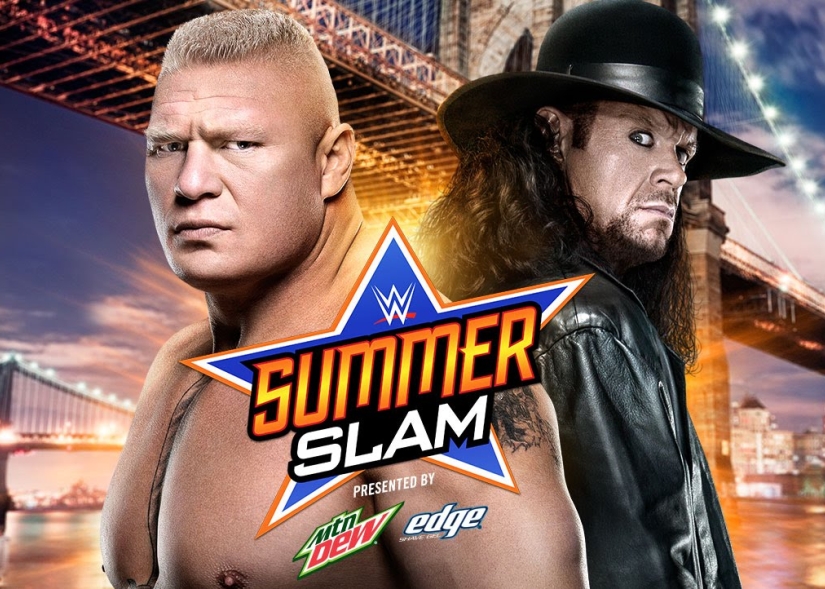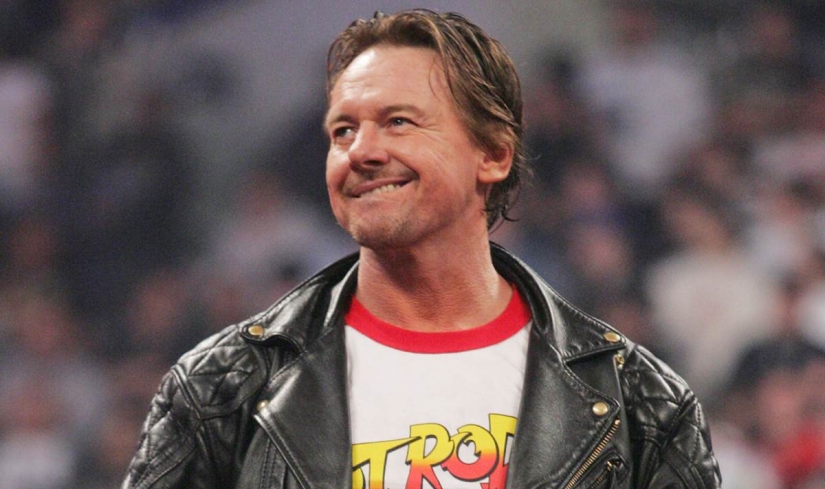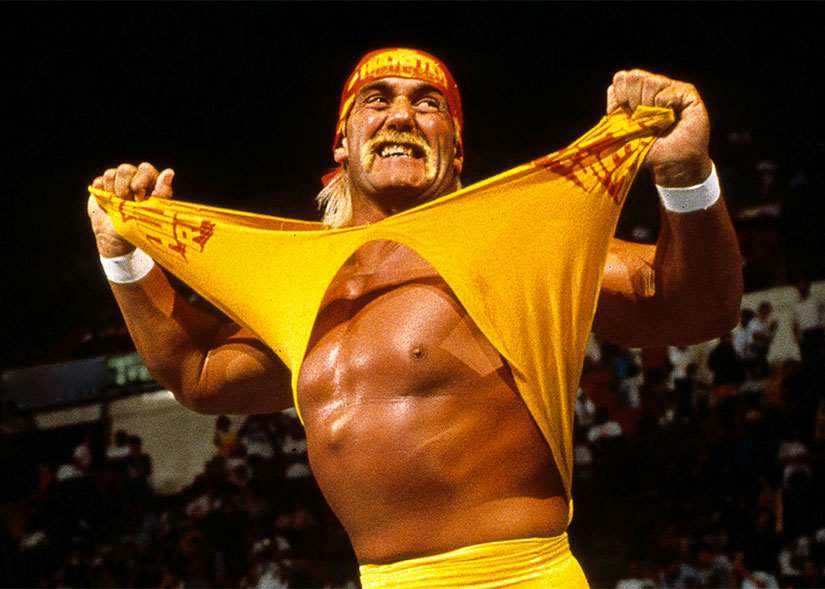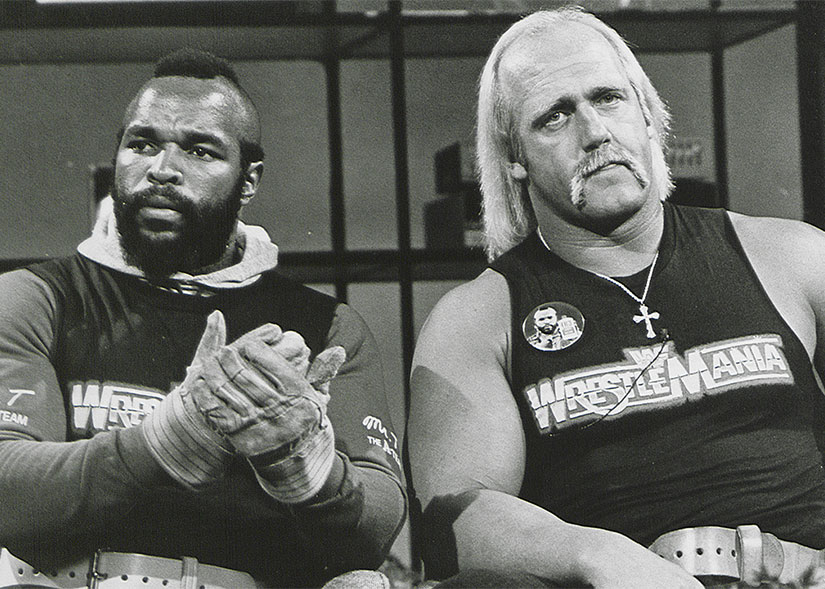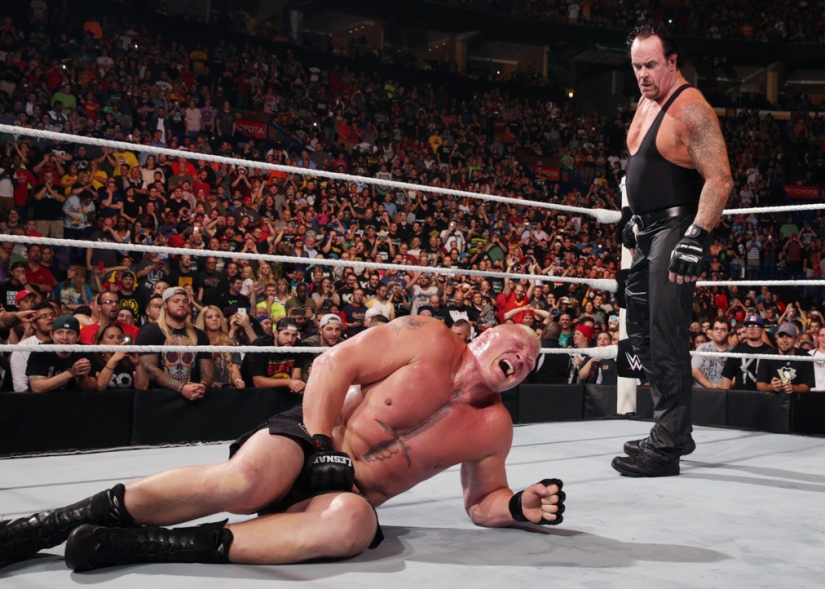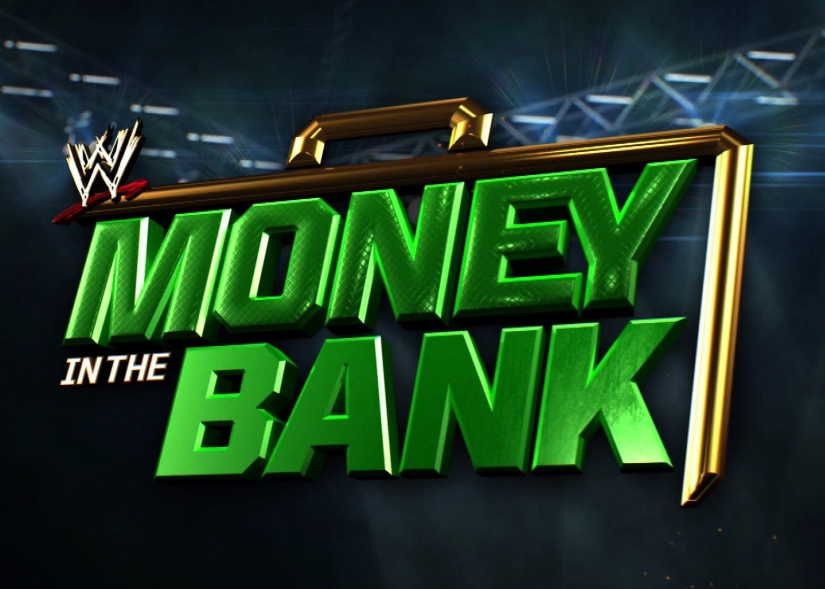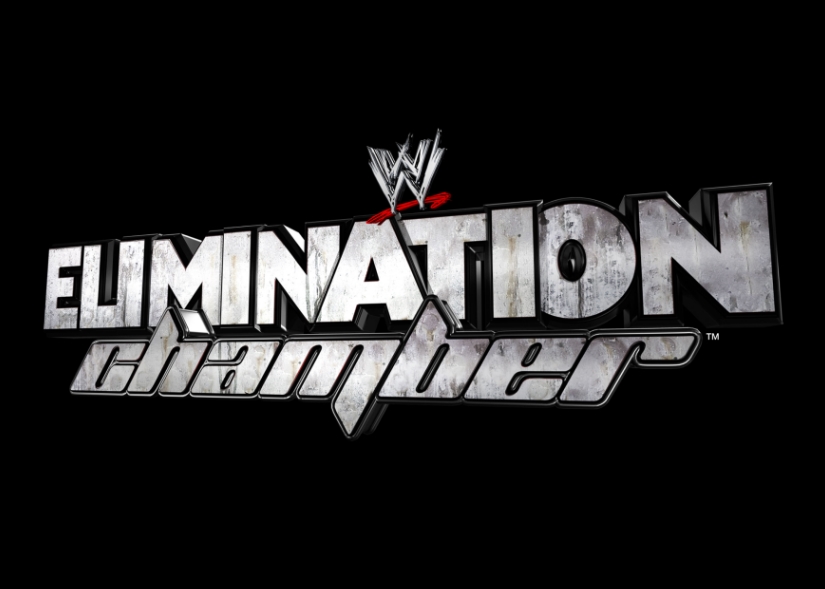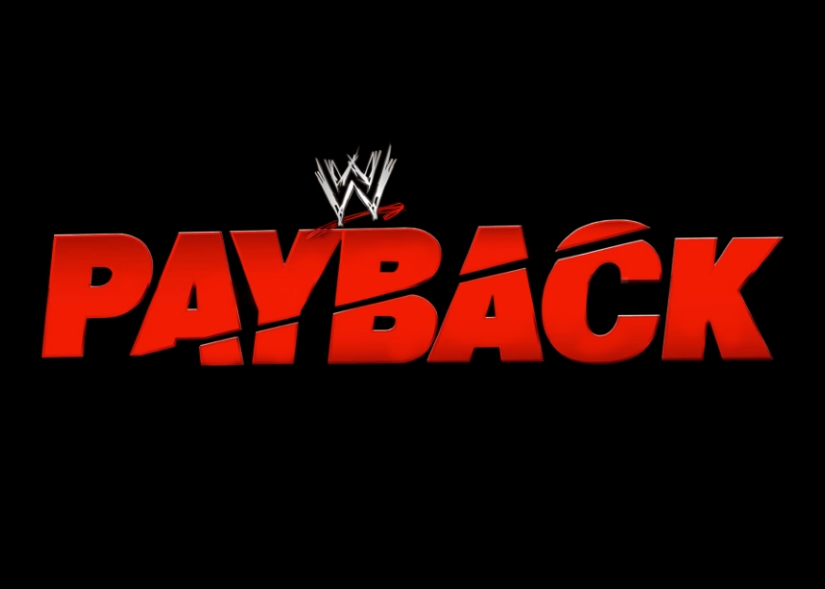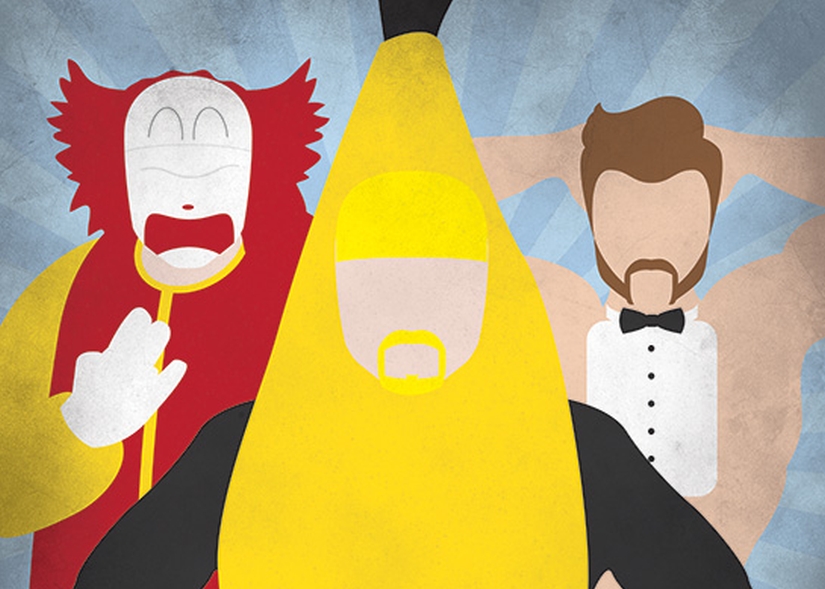WWE SummerSlam 2015: Results and Match Reviews
WWE SummerSlam 2015 promised to be the biggest and best SummerSlam of all time. Almost four hours of action and 10 matches with two main events, including the long-anticipated rematch between Undertaker and Brock Lesnar. The show had Jon Stewart as host, a match with Arrow's Stephen Amell, and a guest appearance by Mic Foley.
But let's face it, SummerSlam 2015 was a stinker.
If Monday Night Raw is three hours that should be cut to two, SummerSlam 2015 is four hours that should be cut to about two and change. Too many inconsequential matches, screwy finishes, and just bad writing and booking. NXT: TakeOver, which took place the night before SummerSlam 2015, was just over two hours, and a reminder of why quality is more important than quantity. Hell, indie promotion Ring of Honor's Field of Honor show in Coney Island over the weekend was far better than SummerSlam 2015 too.
I feel bad for anyone who paid for SummerSlam on actual pay-per-view.
Let's go through the weekend of wrestling in Brooklyn and then consider the results, the highs, and the lows of SummerSlam 2015.
"Rowdy" Roddy Piper (1954-2015): The All-Time Great That Wrestling Fans Loved to Hate
At UFC 190 over the weekend, Ronda Rousey dismantled Bethe Correia in just 34 seconds. (Combined length of Rousey's last three matches: 64 seconds.) Following the match, Rousey gave a shout out to "Rowdy" Roddy Piper, the wrestling legend who passed away last week at the age 61. Piper was one of Rousey's heroes and friends. She'd spoken to him just a few days before, and it's from Piper that the Women's Bantamweight Champ inherited the nickname "Rowdy." Rousey, elated by the win but showing hints of sadness, said she hoped Piper and her late father enjoyed watching the fight together.
Roddy Piper is the latest wrestling legend to die this year. While I always enjoyed Dusty Rhodes' promos (and I regret not writing about his passing a several weeks ago), I always had more of a connection to "Rowdy" Roddy Piper. He was a tough-guy madman, a prototype for heels and tweeners in the era of professional wrestling I grew up watching. Roddy Piper was the raging, motor-mouthed Daffy Duck of the squared circle, just the sort of crazed SOB that people were supposed to love-to-hate.
But really, in the end, people just wound up loving Roddy Piper.
[youtube id="yBgk7z23zfc"]
While discussing the documentary Bodyslam: Revenge of the Banana!, I mentioned that the best wrestling characters are really just extensions of a person's real personality. If that's the case, Roddy Piper was probably a certifiable loon. I think he once said he had more issues than TV Guide, and it played into his larger-than-life character. He'd blast out invective, often at high speeds, much of it crazed, and yet consistently compelling and oddly brilliant. Re-watching several of his promos over the weekend, I noticed again how his delivery had a zonked-out sing-song. He was part obnoxious schoolboy and part deranged parrot.
Listen to him again. Piper's voice is like an oscilloscope gone haywire, or perhaps the highs and lows in his voice were like a seismograph that registered every tremor of fear from those nearby. How much of this stuff had Piper written ahead of time and how much of it did Piper ad lib on the spot? The brilliance is that the audience, even contemporary smarks, aren't sure. The character's shtick is so well realized that even in the cartoony world of 80s pro-wrestling, it seems real.
Roddy Piper was born Roderick George Toombs. His childhood was a rough one, and he ran away from home around junior high or high school. The old cliché was you'd run away to join the circus. Running away to join professional wrestling doesn't seem much different, really. The circus and the squared circle are built on spectacle, performance, entertaining danger, and the workers learning how to speak a dialect of carny so the marks in the crowd don't catch on.
[youtube id="c9rrgJXfLns"]
Piper made his in-ring debut in Winnipeg at age 15 against Larry Hennig, the father of the underrated all-time great Mr. Perfect. Piper was enhancement talent during the rookie years of his career (aka a jobber, aka he made other wrestlers look good by losing) and learned the ropes of the business the old-fashioned way. Eventually Piper turned up in Los Angeles to feud with Chavo Guerrero Sr., and then Georgia to tussle with Ric Flair and Greg Valentine. When he signed with the WWF in the mid-80s, his career took off. Though Hulk Hogan was the company's primary draw, Piper was Hogan's antithesis and adversary. As much as Hogan and the other wrestlers on the roster, Piper was instrumental in making the first WrestleMania and subsequent wrestling events of that era major hits.
Piper's odd place in pop culture is mostly rooted in that Rock 'n' Wrestling phase of the 80s. He did make a few films, many of which are cult-movie also-rans, but the best of which is John Carpenter's 1988 masterpiece They Live. In it, Piper plays a tough drifter named Nada who uncovers an alien plot to turn humanity into a bunch of compliant, passive consumers. There's a high-minded critique of the 80s similar to Alex Cox's Repo Man, but there's also a schlocky B-movie quality that's perfect for the nature and execution of the conceit. How do you fight consumerism? Sunglasses and shotguns, buddy. In that weird intersection between low-brow and high-brow, They Live and professional wrestling were two primary influences on artist Shepard Fairey.
It's Piper's persona as a badass that comes through in They Live. Perhaps Kurt Russell could have played Nada, but the whole feel of the film would have been different. Without Piper's in-ring work as a wrestler, Carpenter probably wouldn't have included the kookiest street fight in cinematic history, let alone allow the scene to go on as long as it does. Piper's a great fit for the movie for much the same reason that the Roddy Piper character was an ideal wrestling gimmick. Piper is just playing himself, or at least an extension of himself. He may have been born Roderick Toombs, but Roddy Piper wound up being the genuine article.
[youtube id="uzvNPq_5P2g"]
There's one particular promo from Piper that I've always loved. In it, Piper smashes a real beer bottle on his head. Bleeding profusely from his brow and possibly only half-conscious, he then constructs a monologue that's part intimidating rant and part logical syllogism. There's determination in his voice, and some of that may just be hyper-focused concentration so he doesn't pass out. Somehow, Piper is cognizant enough to form sentences, and even, like the pro he is, turns so he's facing the correct camera when the angle is switched. Piper pauses as the cut happens, composes himself, concludes his speech, and then walks off.
Maybe he passed out when he was away from the crowd and the camera. Probably not, though. I want to believe in the character of Roddy Piper.
Just watch that promo. Seriously, don't mess with him. Remember the line he delivered in They Live?
"I have come here to chew bubblegum and kick ass... And I'm all out of bubblegum."
Truth is, Piper was always out of bubblegum.
Hulkamania Has Finally Run Dry
"Train, say your prayers, eat your vitamins, be true to yourself, true to your country - be a real American," Hulk Hogan used to say. What happens when your hero turns out to be everything he stood up against?
Throughout the '80s and '90s, Terry Bollea, better known as the larger-than-life Hulk Hogan, was pushed as the face of World Wrestling Federation (as World Wrestling Entertainment was known as back then) at a pivotal time when wrestling was universally praised and reaching a new height in its popularity. During this time, Hogan essentially became the face of American pop culture as Hulkamania ran wild on magazine covers, TV shows, shirts, toys, cartoons, and more.
[youtube id="JD4Y6TqmAfY"]
However, The National Enquirer, in collaboration with Radar Online, recently got wind of Hogan's racist tirade during "pillow talk" on a sex tape that was recorded several years before clips and images were leaked by Gawker back in 2012. During a conversation about Hogan's daughter, Brooke, the wrestler aired his grievances to his partner, Heather Clem, about her failing career:
I don't know if Brooke was fucking the black guy's son. [...] I mean, I don't have double standards. I mean, I am a racist, to a point, fucking n****s. But then when it comes to nice people and shit, and whatever. [...] I mean, I'd rather if she was going to fuck some n*****, I'd rather have her marry an 8-foot-tall n***** worth a hundred million dollars! Like a basketball player!
[youtube id="P05qxH2pISQ"]
In a surprising response, the WWE has fired Hogan from his contract, removed him from their iconic Hall of Fame, ceased production and sale of his merchandise, and have practically wiped away all mention of him on their website. Removal of other Hulk Hogan, like documentaries and matches housed on the WWE Network, the company's On Demand subscription service, may soon follow. The company released a statement concerning Hogan's firing:
WWE terminated its contract with Terry Bollea (aka Hulk Hogan). WWE is committed to embracing and celebrating individuals from all backgrounds as demonstrated by the diversity of our employees, performers and fans worldwide.
However, this isn't the first time Hogan has been publicly exposed as a racist. Despite a Shade 45 interview that took place in 2012 in which Hogan very openly and comfortably used the n-word to describe his friendships with various rappers like Birdman and Lil' Wayne and former WWE wrestler Booker T, WWE never went to this level to distance themselves from the very person that helped them achieve success.
For all intents and purposes, this is the end of Hulk Hogan as we know it, especially considering he was essentially the face of American culture at the height of his popularity. There's no turning back from racist tirades, as evidenced in recent years by Donald Sterling, Michael Richards, and Donald Trump, as it ought to be.
And yet, given the landscape of modern American sociology that has been focused on combating racism and other forms of inequality over the past several years, the Hulkster's theme song's claims of him being "a real American" carries with them a sense of irony following the revelation. 30+ years after he transcended wrestling and became an American cultural icon, has Hogan indirectly come to represent the modern white American male in the spotlight?
For his part, Hogan has issued an exclusive apology to People Magazine following the allegations:
Eight years ago I used offensive language during a conversation. It was unacceptable for me to have used that offensive language; there is no excuse for it; and I apologize for having done it.
This is not who I am. I believe very strongly that every person in the world is important and should not be treated differently based on race, gender, orientation, religious beliefs or otherwise.
I am disappointed with myself that I used language that is offensive and inconsistent with my own beliefs.
If Hulk Hogan ever returns to the ring, with his hand to his ear in one of his many iconic poses, he should be met with total and complete silence. Hulkamania has finally run dry.
WWE Battleground 2015: Results and Match Reviews
WWE Battleground 2015 will probably be notable as a SummerSlam set-up rather than its own decent PPV event. The card was pretty solid overall, yet I couldn't help but feel a strange middling quality to Battleground. Looking at the main event, the John Cena vs. Kevin Owens rematch match, and the debut of NXT women's talent on the main roster, I felt like I'd watched good work but know everyone involved is capable of much better. They're probably all saving it for SummerSlam next month, which is the #2 show of the year. That's fine. Besides, it's just Battleground, and the next few weeks of TV should be interesting.
As you probably know by now, The Undertaker is back, and he's got his eyes on Brock Lesnar. Also, The Undertaker is looking his age, and a bit like Rip Torn, for that matter. As Normal Mailer learned while making Madstone, Rip Torn fights dirty. Truly, Rip Torn is just the type of crazy son of a bitch who'd run in during the main event of Battleground 2015. If Rip Torn runs in during SummerSlam 2015, it will be one of the best pay per views of all time. (Sorry, WrestleMania X7.)
Let's go through the Battleground 2015 card match by match.
WWE Money in the Bank 2015: Results and Match Reviews
The passing of Dusty Rhodes last week lent a tinge of sadness to WWE Money in the Bank 2015. In the pre-show, Renee Young was so moved by a tribute to Rhodes that she sobbed her way through the script. At the start of the event, the WWE roster assembled beneath the TitanTron as they tolled the bell 10 times for everyone's favorite common man.
The sincere emotion was one of the most memorable things about Money in the Bank 2015. It was a generally all right pay-per-view with one very good match and one potential Match of the Year. The solid in-ring work in two other bouts was marred by bad finishes. In fact, there was a stretch of three screwy finishes in a row, which no doubt disappointed the Columbus, Ohio crowd. (They were probably extra-sore when they heard about the NBA Finals during the main event.)
If anything, Money in the Bank 2015 was a better show than Elimination Chamber 2015 and Payback 2015, but still a kind of also-ran in the monthly pay per view slog. At least it wasn't a glorified episode of Raw.
Let's go through the Money in the Bank 2015 results before a computer takes your place, daddy.
WWE Elimination Chamber 2015: Results and Match Reviews
Rather than selling it as a traditional pay-per-view, Elimination Chamber 2015 played out as a WWE Network exclusive. This was likely an attempt to get people to sign up for the WWE Network at the end of May (which was free for new subscribers) in hopes that they would not have a chance to cancel before midnight. That's $10 from the online marks, plus the in-attendance gate from the people of Corpus Christi, Texas.
While Payback 2015 felt like a glorified episode of Monday Night Raw, Elimination Chamber 2015 surprisingly delivered for what it was (i.e., a $10 show with two great matches and one pretty enjoyable one). Leave it to a giant cage with pods to make an otherwise okay event feel semi-special for a tenner, at least at a superficial level.
If your junior prom lacks a theme, might I suggest it be held in an Elimination Chamber?
Also, the Spanish Announce Table was not harmed at all last night. That means for one night, the Spanish Announce Table was Kimmy flippin' Schmidt. (It's a miracle!)
Let's go through the card.
WWE Payback 2015: Results and Match Reviews
A day later than intended, but we're doing it—we're looking at WWE Payback 2015, AKA a decent but forgettable episode of Monday Night Raw or Smackdown. This didn't even feel like a $9.99 network commitment. Payback 2015 should have come with your basic cable package, and woe to anyone who shelled out the coin to buy this on actual pay per view.
Yes, Payback is the latest in a string of inconsequential pay per views on the road to SummerSlam, which may explain why the entire event was lackluster overall. The thin roster, repeated matches, and lack of decent storylines means that everyone was wrestling tonight for everyone's favorite reason: because wrestling.
The two bright spots in all this: The New Day and the Spanish announce table es muy fuerte!
Let's go through this flimsy card and hope for something better when Elimination Chamber closes out May and Money in the Bank starts to make the next few months interesting.
But for now, Payback 2015.
[Tribeca] Bodyslam: Revenge of the Banana! Shows Why Some Wrestling Gimmicks Succeed and Others Fail
In the documentary Bodyslam: Revenge of the Banana, directors Ryan Harvie and John Paul Horstmann follow the bizarre story of Seattle Semi-Pro (SSP), an independent wrestling promotion whose existence is put in danger by an outsider who becomes part of their roster.
SSP is different from other indie wrestling promotions. There's no ring, for one, just a stage and some mats. Gone is the illusion of athletic competition. SSP is also a comedy wrestling promotion, but it's not a witty meta-wrestling cartoon like Chikara Pro. In Chikara, wrestlers will lob invisible hand grenades at one another, or sometimes wrestlers (and the crowd and the commentary team) will spontaneously perform in slow motion. At SSP, one of the headliners is a drunken clown named Ronald McFondle, and another is a guy in a banana costume who dances to The Buckwheat Boyz's "Peanut Butter Jelly Time," recreating a 13-year-old internet meme.
Even though SSP is not my taste in terms of wrestling, it's an irreverent family and there's nothing wrong people coming together and building that sort of kinship.
A lot of drama in Bodyslam: Revenge of the Banana hinges on the clash of personalities both inside and outside the ring (or, in this case, on and off the stage at a dive bar). What the film illustrates in an oblique way is why some wrestling characters succeed and fail, and what makes a good hero (babyface) and a good villain (heel).

